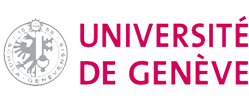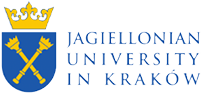The Rhetorical and Dialectical Sources of Medieval Law
This chapter examines the rhetorical and dialectical tools used in medieval legal education and practice. Focusing on the genres of distinctiones, quaestiones, argumenta notabilia, and brocardica, the chapter explores their development, application, and significance in shaping medieval jurisprudence and scholarly discourse.
Les sources rhétoriques et dialectiques du droit médiéval
(Rhetorical and Dialectical Sources of Medieval Law)
Medieval schools of law adopted methods rooted in rhetoric and dialectic, disciplines that were central to the trivium of liberal arts. Rhetoric emphasized persuasive argumentation, while dialectic focused on rigorous logical reasoning. These methods, developed from the 9th century, became the foundation of the scholastic method, which dominated medieval education. This method relied on disputation (disputatio), a process that juxtaposed opposing positions (oppositio contrariorum) and resolved them through reconciliation (solutio contrariorum).
Oppositio Contrariorum
(Oppositio Contrariorum)
The oppositio contrariorum method, central to scholastic inquiry, juxtaposed conflicting norms or concepts to resolve contradictions:
- Hermeneutic and Systematic Use: In law schools, it clarified legal texts, harmonizing inconsistencies and aiding interpretation.
- Judicial Practice: The Romano-canonical trial system incorporated dialectical structures where judges evaluated opposing claims from plaintiffs and defendants. In some cases, antinomies were exploited without resolution, as seen in early brocardica, which provided jurists with arguments for both sides of a case.
Solutiones Contrariorum
(Solutiones Contrariorum)
When aimed at generating knowledge, the oppositio was resolved through a solutio contrariorum. This process reconciled contradictions by distinguishing their application to specific cases. Jurists upheld the principle of a coherent legal system, viewing contradictions as apparent rather than real. Examples include Gratian’s Decretum, where this methodology underpinned the work’s systematic approach to resolving canonical antinomies.
Les genres littéraires de nature argumentative
(Argumentative Literary Genres)
Rhetorical and dialectical techniques informed various literary genres used in legal education and scholarship:
- Distinctiones (Distinctions): Logical divisions of concepts into categories, widely applied to reconcile conflicting texts and systematize legal principles.
- Quaestiones (Questions): Structured debates addressing legal or doctrinal problems, further divided into:
- Quaestiones legitimae Abstract discussions resolving antinomies in legal texts.
- Quaestiones disputatae Practical exercises based on hypothetical or real cases.
- Argumenta Notabilia (Notable Arguments): Marginal notes that evolved into collections of concise legal maxims.
- Argumenta Brocardica (Brocard Arguments): Maxims accompanied by opposing arguments, serving as tools for judicial reasoning and systematic legal interpretation.
Distinctiones
Derived from ancient and scholastic logic, distinctiones divided legal principles into hierarchical categories, clarifying their applicability. This genre was popularized in legal glosses and independent collections, influencing Gratian’s Decretum. Distinctions were often presented visually, using branching diagrams to illustrate logical subdivisions.
Quaestiones
The quaestio combined method and genre, addressing either abstract antinomies (quaestiones legitimae) or practical disputes (quaestiones disputatae). This genre emerged in Bologna and later spread to northern Europe, becoming a central pedagogical tool. Quaestiones evolved from classroom exercises to collections authored by jurists like Pillius de Medicina and Jean Bassian.
Argumenta Notabilia
Initially marginal notes, notabilia evolved into collections of legal maxims accompanied by supporting references. These compilations systematized canonical and civil law, serving both practical and pedagogical purposes. Organized by thematic or textual order, they bridged legal practice and scholarly commentary.
Argumenta Brocardica
The brocardica genre synthesized legal maxims with dialectical opposition, creating a dynamic tool for argumentation. Early brocardica collections focused on providing general arguments for judicial practice. Over time, they incorporated solutions to antinomies, aligning them with the systematic aims of canon and civil law.
Conclusion
The chapter underscores the interconnectedness of rhetorical, dialectical, and legal traditions in medieval scholarship. By analyzing genres like distinctiones and brocardica, De Concilio highlights their role in harmonizing legal principles and advancing medieval jurisprudence. These tools not only shaped the intellectual culture of legal education but also provided practical frameworks for resolving legal conflicts.







